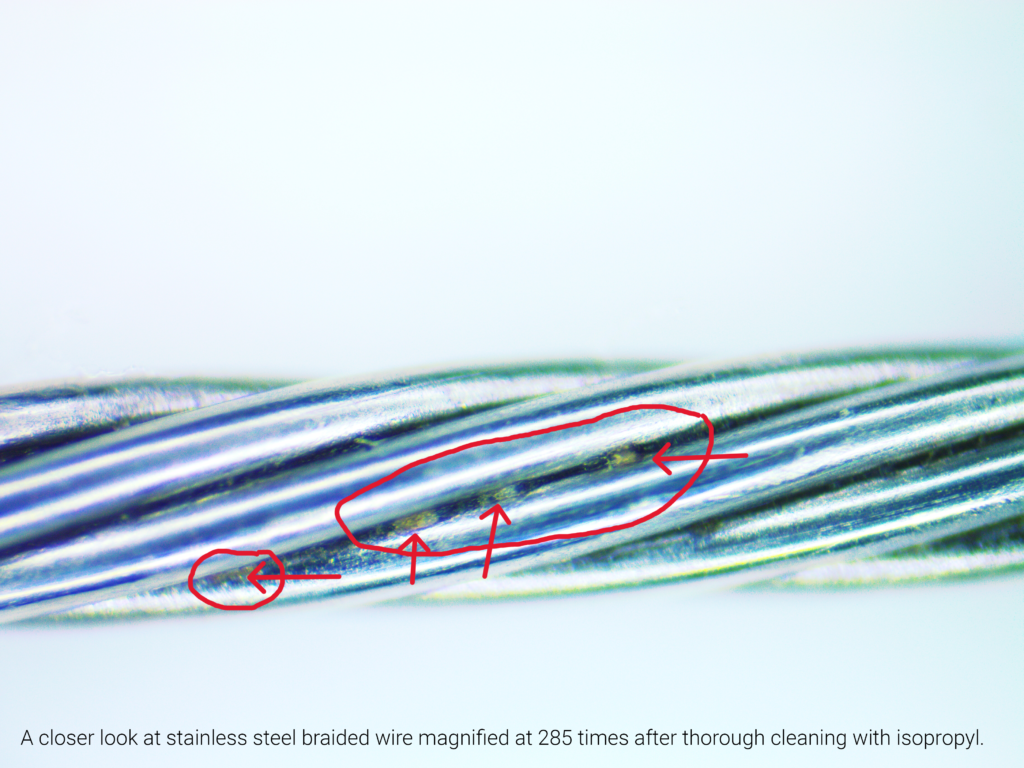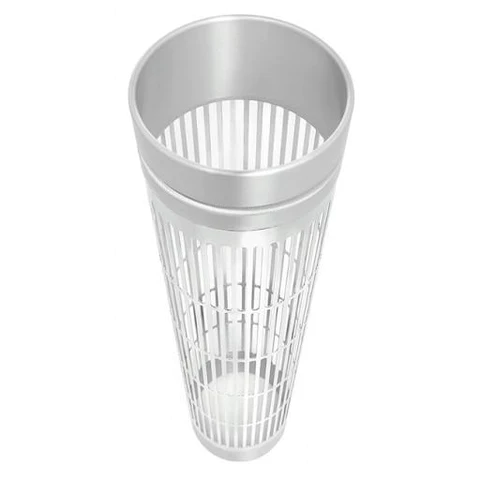Clients are able to receive a free 30-minute consultation with a company representative to get a better understanding of what they need.
Let Us Do the hard work for you

In the meticulously regulated world of cannabis cultivation and processing, every stage, from seed to sale, plays a pivotal role in determining the quality of the final product. Of these stages, post-harvesting stands out as a particularly critical juncture, where the harvested cannabis transitions from raw plant material into a product ready for consumption or further refinement.
The equipment employed during this phase, often made from materials synonymous with purity and resilience, is expected to maintain the highest standards of hygiene and integrity. Stainless steel, with its lustrous sheen and sturdy demeanor, has long been revered for its supposed cleanliness and durability. However, beneath the surface, particularly in the braided designs of stainless-steel cables, lurk complexities that could pose threats to cannabis quality. This piece delves into this hidden adversary, shedding light on an issue often overlooked but of paramount importance to cannabis producers and consumers alike.
Braided stainless-steel cables are an intricate blend of strength and precision engineering. At their core:
The reason for the use of braided stainless-steel cables in post-harvest equipment is multi-faceted:
In essence, the braided stainless-steel cables, with their specialized construction, align perfectly with the demands of post-harvest equipment, ensuring a combination of reliability, durability, and safety. However, as we will discover, these very designs may also present unforeseen challenges in maintaining cannabis quality.
Even small amounts of organic matter, when combined with moisture trapped in the cables’ interstitial spaces, can lead to microbial growth. In an industry where product quality and safety are paramount, such contamination is unacceptable. Microbial growth can affect the potency, flavor, and safety of the end product, leading to recalls and reputational damage for the producer.
Moisture and microbial contamination are significant challenges in the cannabis processing industry. One often overlooked aspect of maintaining hygiene is understanding the cleaning complexities of using braided stainless-steel cables in cannabis processing equipment. These cables are commonly used in various machinery and equipment used for processing cannabis, such as extraction machines and drying racks.
However, due to their intricate braided structure, they can trap moisture and become breeding grounds for microbes if not cleaned properly.
Moisture is a common issue in cannabis processing facilities due to the nature of the plant and the extraction processes involved.
Moisture can promote the growth of bacteria, mold, and other harmful microorganisms that can contaminate the cannabis products. Braided stainless-steel cables, with their small crevices and interwoven strands, can easily trap moisture, making it difficult to completely dry them after cleaning. This trapped moisture can then lead to microbial contamination if not properly addressed.
Proper cleaning and maintenance of braided stainless-steel cables are essential to prevent microbial contamination in cannabis processing equipment. Regular cleaning with appropriate cleaning agents and techniques is necessary to remove any dirt, residue, or moisture trapped in the cables. Thorough drying is also crucial to ensure that no moisture remains in the cables, as this can create an environment conducive to microbial growth.

The use of braided stainless-steel cables in cannabis processing equipment poses a hidden challenge when it comes to maintaining hygiene standards. While stainless steel is known for its durability and resistance to corrosion, the braided design of these cables can complicate the cleaning process.
Cannabis processing equipment needs to be thoroughly cleaned to ensure product safety and prevent contamination. However, the intricate structure of braided stainless-steel cables can trap residue and make it difficult to remove during cleaning.
Cleaning cannabis processing equipment requires a meticulous approach to ensure that all surfaces are properly sanitized. This includes not only the machinery itself but also any components, such as cables, that come into contact with the cannabis. Braided stainless-steel cables can have crevices and gaps where debris and contaminants can accumulate, creating a breeding ground for bacteria or mold. This makes thorough cleaning and disinfection challenging, as traditional cleaning methods may not effectively remove all residue from the cable’s surface.
To overcome this challenge, cannabis processors need to develop specialized cleaning protocols specifically tailored to address the complexities of braided stainless-steel cables. This may involve using specialized cleaning agents or implementing additional cleaning techniques, such as ultrasonic cleaning or steam sterilization, to ensure that all areas of the cables are thoroughly cleaned.
Regular inspection and maintenance of the cables is also crucial to identify any signs of wear or damage that could compromise their integrity or cleanliness.
Ultimately, the use of braided stainless-steel cables in cannabis processing equipment presents a unique challenge when it comes to maintaining hygiene standards. Cannabis processors must be aware of these complexities and develop specialized cleaning protocols to ensure that all components, including the cables, are thoroughly cleaned and sanitized.
An alternate way to prevent contamination is to avoid equipment containing braided stainless-steel cables altogether and opt for equipment that doesn’t have this feature. By taking these measures, they can mitigate the risk of contamination and ensure the safety and quality of their cannabis products.

As the Canadian cannabis industry matures, it’s imperative that we draw lessons from established sectors like pharmaceuticals, particularly in areas of equipment hygiene and validation. The unique challenges posed by components like braided stainless-steel cables highlight the need for innovation and stringent oversight. Given the intricate complexities associated with cleaning these cables, manufacturers and producers should strongly consider equipment that sidesteps such challenges. Investing in designs that eschew braided stainless steel not only eases the cleaning process but also fortifies the industry’s commitment to safety and quality. As we stride into the future, our collective aim should be clear: to prioritize both efficiency and hygiene, ensuring the highest standards for products emerging from the Canadian cannabis sector.

MFLRC is a one-stop shop for all of your Licensing, quality assurance and compliance needs. Our team has years of experience in the cannabis industry and are experts in all facets. We offer a variety of services that will save you time and money. Let us take the burden off your shoulders so you can focus on what’s important – growing your business.
Contact us Now!
Mussarat Fatima, President, and owner of MF Cannabis License and Regulatory Consultants has more than twenty years of experience in Quality Assurance, Quality Control, and Regulatory Affairs within the pharmaceutical, Food and Cannabis industries. She has a Master’s Degree in Food Sciences and Biochemistry; in addition to this, she also has a diploma in pharmaceutical Quality Assurance, Regulatory Affairs, and Quality Control. Also, she has completed several certifications specifically in Cannabis Quality Assurance, Regulatory Affairs, and Facility management from recognized institutes in Canada.

Written By: Mussarat Fatima
President at MF License & Regulatory Consultants
Website: https://mflrc.com/
Contact: info@mflrc.com